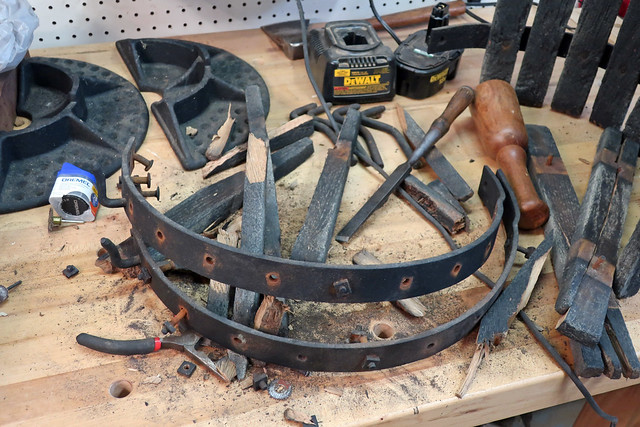Thanks
@balatonwine. After reading your post, I did a bunch of research on this. Then went a different direction. Lemme 'splain:
All spray paints that I can find, Krylon/Rustoleum included, may contain toxic compounds when aerosolized, but dry to be non-toxic. Now, while non-toxic is fine, it does not meet a food safe standard as set by FDA. Food safe coatings can then be further delineated into different acceptable food contact - direct, indirect, and incidental. Trouble is, I can't find any clear guidance from FDA on how those are actually defined. Steel-It, which is widely used in wineries for processing equipment, is only suitable for incidental contact, which (anecdotally) I find to mean possible but improbable, not expected or prolonged contact. The paint sold by Presque Isle is labeled for indirect contact; again anecdotally, contact but not prolonged (the reference I keep finding is that the outside of food packaging is considered indirect contact). I have yet to find a reasonable paint option for
direct food contact. And I think the kicker on all of this, and why I can't find any real guidance, is that it would require someone to define
residence time as it relates to processing. For example, if the free run juice in pressing is out of the press in 30 seconds, is that acceptable, versus the must/grape contact with the painted parts of the press for, say, 30 minutes? It's a risk question, and depends largely on the hazards presented by what
might be making contact with the food.
I had about decided on just going with the Presque Isle stuff and squashing the chemist and ChE in me, when I started pondering surface preparation of the cast iron to ready for whatever paint I ultimately went with (all this still pending the powder coating quote I've yet to receive). Joined a metalworking forum as metallurgy is not my strength. Described the current condition and age of the iron, and that it is completely rust free. One of the replies I got, that was borne out by some further research, is the tannic acid and iron react to form an insoluble, inert complex, iron tannate. Which is also the basis of several "rust killers" on the market. Which is also why iron nails stain oak lumber (which, drat, I knew in a previous life). Tannins react with a couple oxidative states of iron to product this compound, which create a blue/black coating on the metal, which stops any corrosion. And, from what I've been able to find, effectively passivates the iron. The comment I got on the metalworking forum also suggested that, to remove that layer would require substantial material removal from the press.
So, my plan now is to wash the iron thoroughly, maybe coat the head with Boeshield just to help lubricate and protect it, clean the threaded section of the screw and lubricate lightly with some kind of food safe lubricant (McMaster Carr is good for that), and rebuild the basket with quartered white oak. I may get fancy and fume the oak and finish with pure tung oil, which dries to a hard, food safe finish. But the plan now is to leave the iron in its current state, and I'm pretty confident that the tannate, and what I expect will be reasonable residence times through the press, will keep me on the good side of any iron leaching.
If you've made it this far, thanks for reading.
Scott






















































 Basket Disassembly...
Basket Disassembly...